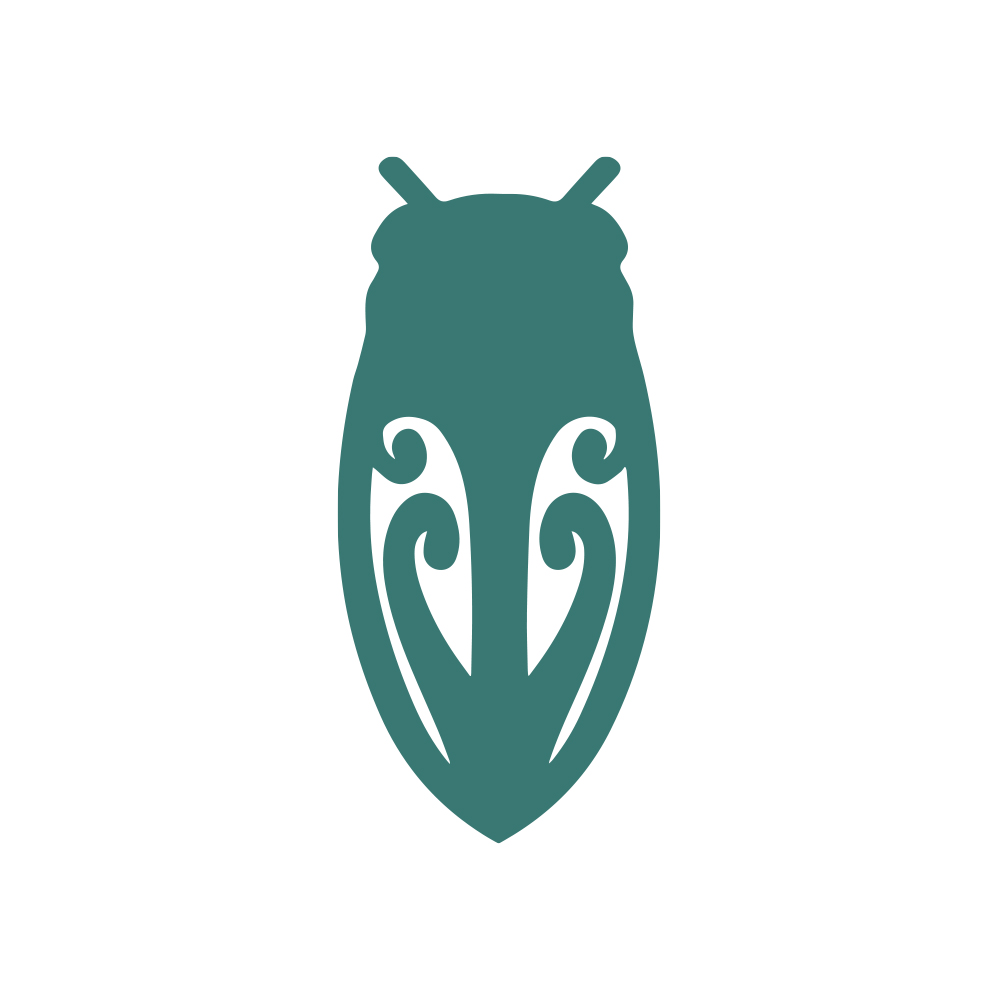Design elements used in the project area are being used as an expression of Te Whata Kai o Māui - Wainuiomata (Cultural Narrative).
Depending on feedback, these, and other elements would be incorporated into more permanent designs on key routes for people using active and low carbon transport through Wainuiomata.
| Ngā Hoahoa Kāhui Mounga | Kāhui MoungaDesign developed by local artist Tiaki Dahm (Te Āti Awa, Ngāti Ruapani ki Waikaremoana, Ngāti Pāhauwera, Ngāti Kahungunu ki te Raupunga). This design is a representation of Te Kāhui Mounga (the mountain clan): Taranaki, Rauhoto, Ruapehu, Tongariro, Ngāuruhoe & Pīhanga taken from Te Whata Kai o Māui - Wainuiomata Cultural Narrative, and specifically from the pūrākau of the formation of Te Whanganui a Tara. Each Mounga is represented by a ‘koru’ (pītau) spiral form. This talks about the journey and movement each Mounga took to reach Pukeatua. This design has been placed on intersections at the feet of Pukeatua. |
MōmonaDesign developed by Josh Ambler (Ngāpuhi), Kaupapa Maori Design Officer, Hutt City Council. Mōmona is visual expression of the “rich surround sound orchestra” present in the cultural narrative of Te Whata Kai o Maui. Birds, Insects, and water ways all contribute to the natural orchestra of the forests of Tane. This design reimagines the mōmona (wetlands) that once covered Wainuiomata and were used by Mana Whenua during times of conflict. Wāhine and tamariki would traverse Pukeatua to find refuge from threats, as the mōmona were often hard to navigate, these spaces were considered a place of safety. This design has been placed on intersections that provide a similar function to the mōmona of the past, offering safety and refuge for pedestrians as their journey moves them through road space. |
|
| RipplesDesign developed by Hayley Jeffrey, Urban Designer, Hutt City Council. Through kōrero Hayley began to see how pūrākau (stories) fortify deep bonds between our past and present, connecting people, whenua and whakapapa in fresh and meaningful ways. These kōrero rippled through the project, influencing art and design, carrying with them an active energy which transformed urban form. Ripples can be found at intersections in the project area. |
Tuna (Eel)The tuna (eel) is visual expression of the rich surround sound orchestra present in the cultural narrative of Te Whata Kai o Maui. Birds, Insects, and water ways all contribute to the orchestra of the forests of Tane. This design is a reminder that our environment with non-human elements and if we are going to continue to see species like the tuna thrive, we must do our part. The tuna can be found in spawning areas, many of these tributaries have been redirected over the years that Wainuiomata has developed. View our video to learn more about the tuna tohu. |
|

| Tātarakihi (Cicada)The tātarakihi is visual expression of the rich surround sound orchestra present in the cultural narrative of Te Whata Kai o Maui. Birds, insects and water ways all contribute to the orchestra of the forests of Tane. In Mana Whenua kōrero the percussive beating of their wings represents the energy of children and is a symbol used by Taranaki Whānui finding its whakapapa in Parihaka. The tātarakihi is used in key micro mobility routes between schools. View our video to learn more about the tātarakihi tohu. |
Titipounamu (Rifleman)The titipounamu is visual expression of the rich surround sound orchestra present in the cultural narrative of Te Whata Kai o Maui. Birds, insects and water ways all contribute to the orchestra of the forests of Tane. This design celebrates the predator control in Wainuiomata’s native forest, which has created an environment where native species thrive. As of 2019 the population of titipounamu in Wainuiomata has recovered significantly and 60 titipounamu were gifted to Zealandia to establish a population in Pōneke, where they had not been seen for over a decade. View our video to learn more about the titipounamu tohu. |  |
 | Te RaukuraTe Raukura is visual expression of the rich surround orchestra present in the cultural narrative of Te Whata Kai o Maui. Birds, insects and water ways all contribute to the orchestra of the forests of Tane. Te Raukura is used to bring awareness to the kiwi whānau which occupy Wainuiomata, In recent history, kiwi were named and blessed at Wainuiomata marae. Later they were released into the surrounding forest areas. Te Raukura in Mana Whenua toi Māori finds its whakapapa in Parihaka. It represents spiritual, physical, and communal harmony and unity and is a symbol of faith, hope, and compassion for all of mankind and the environment that we live in. |



